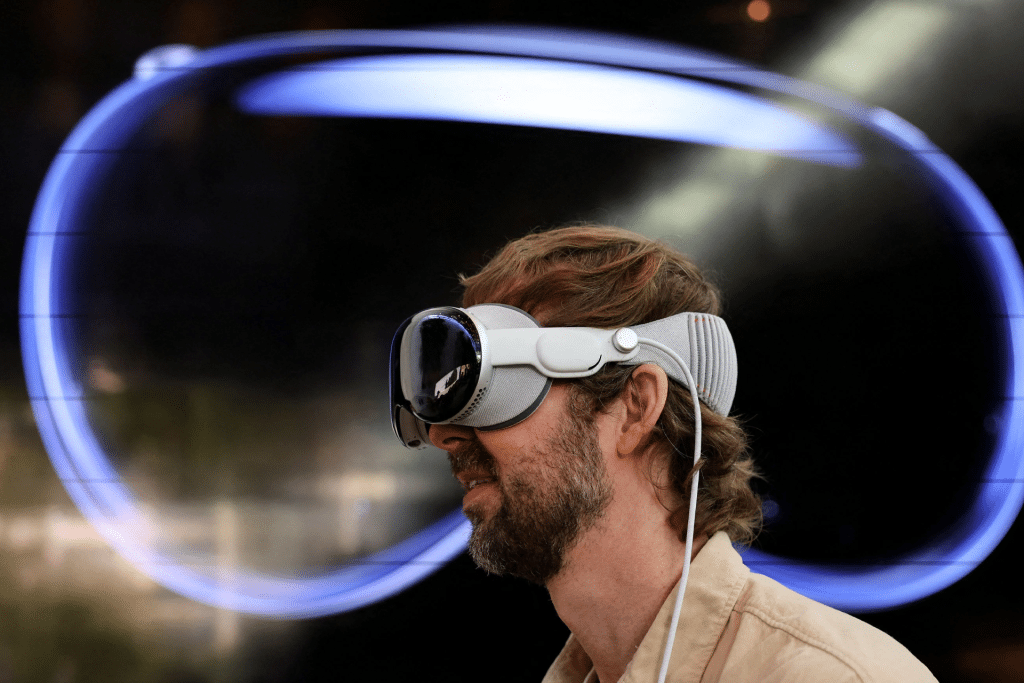The next Apple Vision Pro has surfaced in U.S. regulatory filings, offering the clearest look yet at what Apple is preparing for the second generation of its mixed reality headset. The Federal Communications Commission (FCC) documents, made public this week, detail new connectivity components, subtle hardware revisions, and updated testing that point toward an upcoming release.
While FCC filings are not designed to reveal product features in consumer-friendly language, they remain one of the most reliable sources for spotting changes before official announcements. The new Vision Pro appears to carry iterative but meaningful updates — the kind that suggest Apple is preparing to refine comfort, performance, and wireless stability after the ambitious debut of the first model earlier this year.
Connectivity and Wireless Updates
One of the standout revelations from the FCC filing is the presence of updated wireless radios. The new Vision Pro includes revised support for Wi-Fi 6E and low-latency Bluetooth, likely aimed at improving real-time streaming and accessory pairing. This could mean smoother integration with external Macs, iPads, or iPhones when used in shared workflows.
For professional users — from designers to filmmakers — the enhanced wireless stack could reduce lag when working with large files or streaming high-resolution content into the headset. It also positions the device better for multi-user experiences, where multiple Vision Pro headsets operate in the same environment.
Subtle Design Adjustments
The FCC documents also describe minor changes to the physical design. These appear to focus on antenna placement and thermal management, which could improve comfort during extended sessions. The original Vision Pro, while praised for its immersive quality, drew criticism for its weight and heat buildup. These revisions may not transform the headset’s appearance but could make it more practical for daily use.
Industry watchers point out that Apple tends to take this approach with its most expensive devices: big, ambitious first-generation hardware followed by second iterations that address early complaints. The FCC filing hints that the next Vision Pro is following that same trajectory.
Signals of a Faster Refresh Cycle
The timing of this filing is noteworthy. The first Vision Pro only launched in early 2025, and already its successor is undergoing regulatory approval. That suggests Apple is pushing for a faster refresh cycle than some analysts expected.
A quicker cadence could help Apple respond to competition from Meta, Samsung, and other headset makers racing to define the spatial computing market. It may also reflect Apple’s need to broaden adoption by delivering smaller, lighter, and more affordable headsets sooner rather than later.
What Remains Unknown
The FCC does not provide full technical specifications, and some of the most pressing questions remain unanswered. It’s unclear whether the next Vision Pro will include a new chip architecture, higher-resolution displays, or battery life improvements — areas where many users have voiced a wish list.
Pricing is also unknown, and Apple’s strategy in this regard could be just as critical as the technical changes. The Vision Pro’s premium cost has been a major barrier to mass adoption. Whether the company sticks to the ultra-high-end or diversifies into a broader range will be revealed later.
Looking Toward Apple’s Next Move
The FCC filing doesn’t confirm a launch window, but historically, such appearances precede announcements by only a few months. If Apple follows past patterns, the next Vision Pro could be formally introduced as early as the first half of 2026.
For now, the regulatory trail provides important hints: Apple is refining its headset, smoothing out first-generation challenges, and signaling that the Vision Pro will continue to evolve quickly. The details — including whether Apple is preparing multiple models or just one — will be the focus of deeper analysis in this Friday’s AppleMagazine digital issue, where we’ll break down the filing in full and examine how Apple’s strategy fits into the broader mixed reality race.
